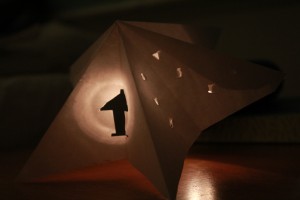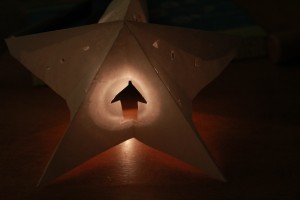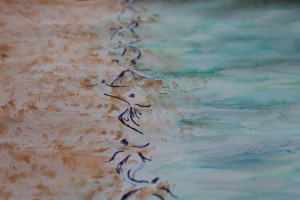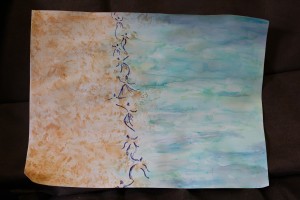Introductory Essay
I took Professor Asani’s freshman seminar four years ago which sparked my interest in how Islam is perceived across the globe. After taking his class, I took a course on North African colonialism and other courses on the perceived East, West divide, but these classes did not attempt to address the connections between this divide like Professor Asani. That said, the classes that the freshman seminar inspired me to attend lended themselves well to better understanding the seminar’s material. For example, I took a literature course called The Arab-American Experience in Fiction, Film, and Popular Culture as well as a class on 16th and 17th century Spanish literature in which I chose to write my final paper on the depictions of Muslims in Spanish “novelas moriscas” such as El Abencerraje. Taking A&I 54 For the Love of God and his Prophet allowed me to reexamine works from the seminar such as The Reluctant Fundamentalist and Persepolis with the new tools that I have learned from works in previous classes such as Orientalism, by Edward Said. Outside of the Harvard classroom, I have learned about Islam in a specific context through study abroad in Morocco. The Moroccans that I spoke with proudly told me that Moroccan Islam is moderate and that they believe it to be compatible with the west. This may be so, but I think many Americans including myself before my stay in Morocco do not know enough about “Moroccan Islam” to consider it different from other kinds of Islam. When I returned to campus, I wanted to learn more about the nuances in varying practices of Islam and I have found this A&I course to be very helpful in considering the multiple ways that Islam is practiced.
In reviewing my submissions for portfolio, the theme of identity formation stands out the most. My interest in this topic stemmed from materials covered in class such as the movies New Muslim Cool and Koran by Heart, and Hamid’s The Reluctant Fundamentalist which sought to question “fixed” identities and the passing of knowledge and identity from parent to child. These works demonstrate how labels unfortunately do matter in this world; they make me contemplate how one negotiates his or her muslim identity. (I have left muslim in lower case here as I am referring to the ways one submits to god, even if they do not follow Islam). From the week focusing on the Taziyeh, I learned about how shi’i communities preserve their identity in part through the Taziyeh tradition and its connection to historical events. I think the most apparent renegotiation of identity is found in mosque architecture, whether in a building or a wearable mosque. Mosque architecture demonstrates not only a variety of Islamic interpretations, but a reshaping of traditions from multiple religions. The mosque design project created the perfect channel for us students to take part in and better understand this reshaping and formation of traditions under different contexts.
To better understand my blog posts, I would like to describe what the cultural studies approach has come to mean to me. At first, when I heard about the cultural studies approach I was concerned about viewing events in isolation, but through this class I learned that the focus on context in this approach does not have to separate events and regions from one another. On the contrary, it encourages us to realize how they interact and impact one another while at the same time being better informed. This concept became very clear during our trip to the Metropolitan Museum of Art. The signs in the exhibit that we visited denoted whether the the art was from Spain or South East Asia, categorizing the pieces geographically. However, Professor Asani related the artwork to each other from across the divided rooms and somewhat arbitrary barriers, national and otherwise. As a political science concentrator with a focus on migration, I enjoyed hearing about how the exhibit pieces were influenced by the migrations of Muslims over time, creating culturally multi-layered evidence of the relationships between societies. The cultural studies approach really hit home for me at the art exhibit “Islam Through the Arts”. Analyzing the art pieces next to one another as opposed to online in an individual 2d version helped put the cultural studies approach in a relatable format. It was eye opening to realize that although all of us students were reading the same texts and attending the same lectures, we still produced such different interpretations of the material. Through attending this exhibit I was better able to understand how misinterpretation or rather the variety of interpretations of Islam form around the world.
The projects in my blog have been works of introspection at the end of my college career. This self reflection, especially through this essay, has been difficult as I am finding that I am sad to leave college. Subsequently the writing has been slow and I have pushed my teaching fellow’s patience (sorry, Axel!). For instance, my calligraphy project was a collage of photos that I have taken of cherished college memories with ‘allah’ superimposed on it. One of the aspects that I have greatly enjoyed in this course is the opportunity to reflect on personal values, perspective on Islam, and identity. The pieces in my blog utilize a few mediums with which I am familiar such as dance and photography as well as mediums such as watercolors that nudged me out of my comfort zone. Dance has long been my preferred form of expression, as it can convey sentiments that cannot be described in words and as Farida Mahwash stated at one of her ‘concerts’, “music humanizes people”. I was surprised to learn that some consider dance haram because they consider it a form of entertainment. Personally, I tend to think of dance not as entertainment but rather as a medium through which dancers have the ability to transcend the moment and communicate a message to the audience to be interpreted as the audience members wish. It was for this reason that I was drawn to the samaa of the whirling dervishes and chose to dedicate one of my art pieces to the way in which the whirling dervishes achieve baqaa through movement. I chose to explore in my art responses a few themes from the class material that were new to me such as sufism as a mystical orientation and not a sect, and finding god in ayaat. I also chose art pieces that relate directly to the conversations and decisions that I have made this year. For example, the inspiration for my “thumbprint of Changez” (titled, [hyphen]New Yorker) was drawn from the post-graduate job that I have just accepted as a paralegal in New York. One of my future responsibilities in that position will be fingerprinting undocumented youth. Through my blog, the reader receives a snapshot of where I am in my life right now.
Similarly to how Rabia Al-Basri redefined the human relationship with god by carrying water to put out flames of hell, and fire to destroy heaven, this class has had a huge impact on my relationship with Islam and religions in general. I am very glad that I took this course as I have learned so much and look forward to applying the cultural studies approach to my career and future studies. I would like to thank Professor Asani and the TFs, Axel and John, for making the time to get meals with students and meeting with them during office hours to get to know all of their students. I really appreciate their putting extra time into the class through the very fun (and educational) field trip to New York. Lastly, I want to express my appreciation for the experiential learning component of the course which is not often undertaken at Harvard, at least not in the government courses that I have taken. The experiential learning in this class has given faces, cultures, and personalities to the various class readings, reports, and statistics that I have read over my college career. I now feel better equipped to approach my future with a greater sense of humanity.











